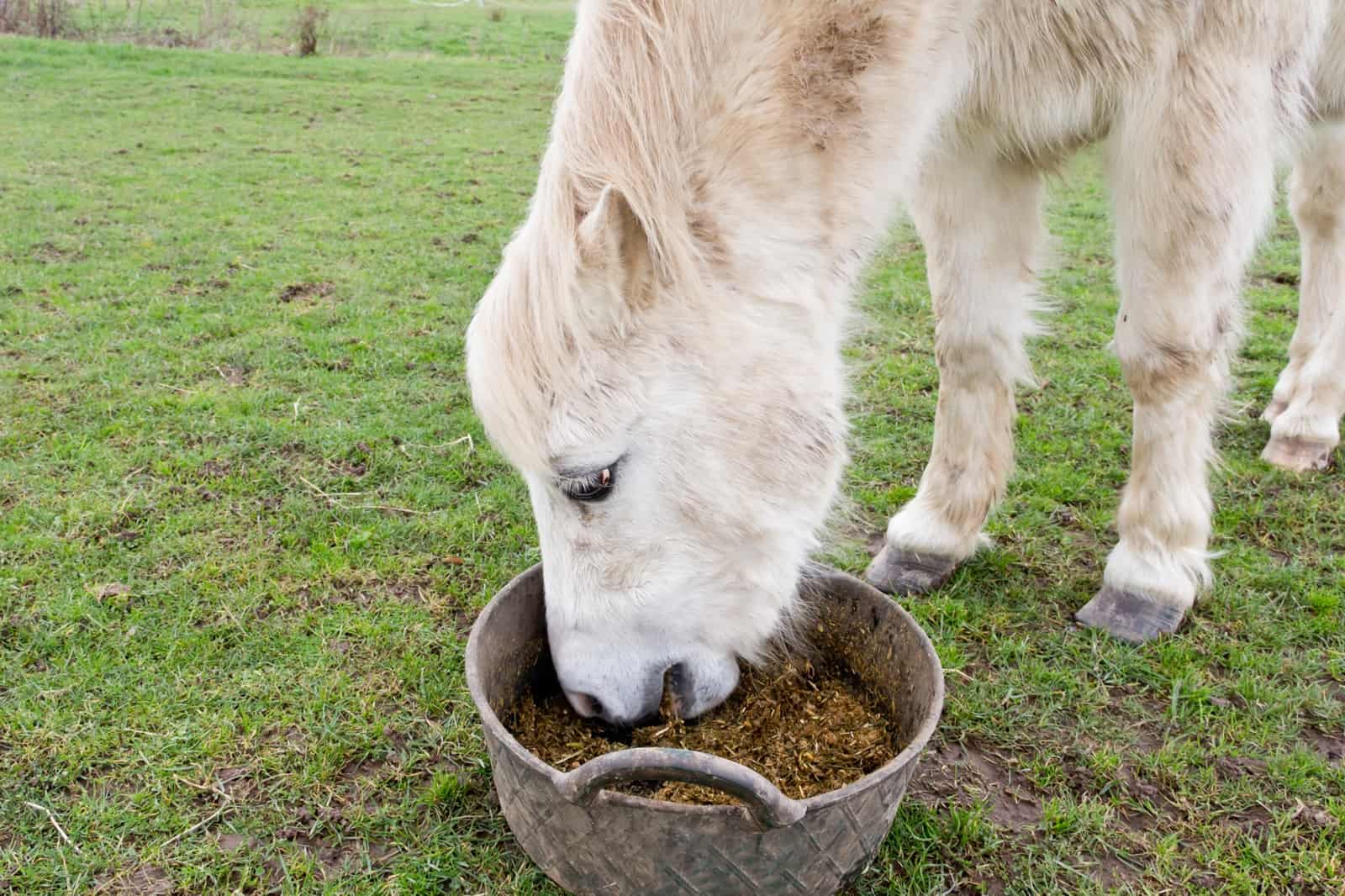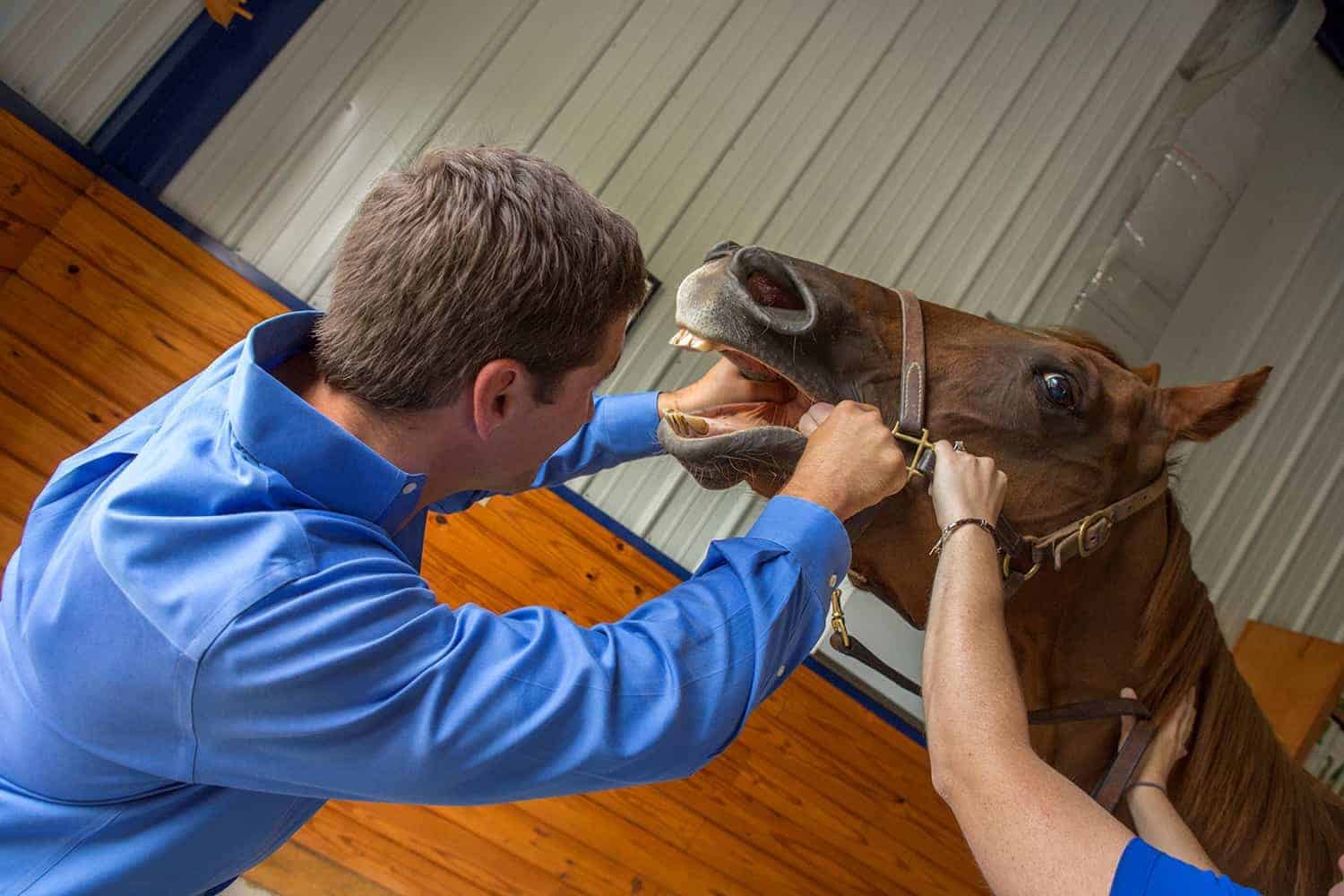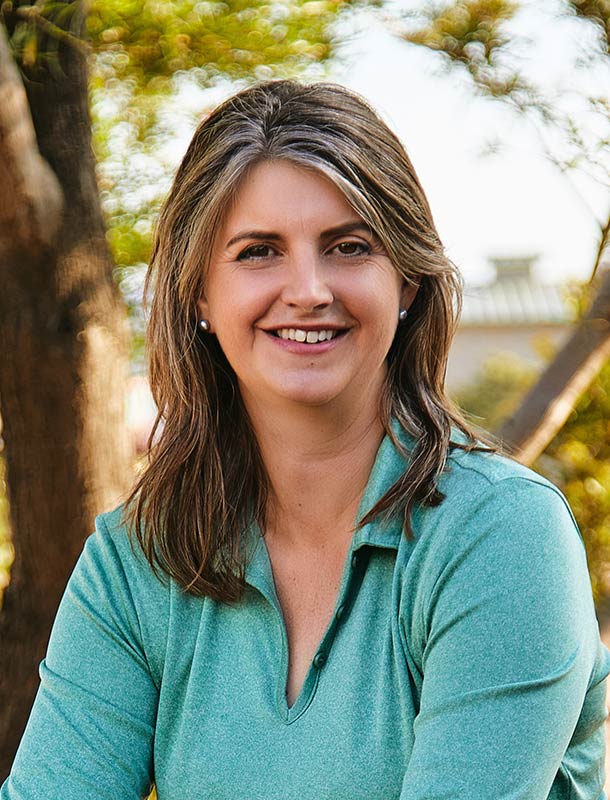Feeding Equine Elders

Commonly asked questions about diets for older horses
You wouldn’t feed your 28-year-old retired trail horse the way you’d feed your daughter’s 8-year-old eventer. And you wouldn’t provide your 20-year-old dressage horse in light work the same ration you’d supply to one even just seven to 10 years younger.
Indeed, senior horses have unique nutritional needs. Some have trouble holding or gaining weight, some battle metabolic disorders and dental disease, while others simply don’t chew and digest food as efficiently as they once did.
Our readers ask a lot of questions about this special population of equids. So independent equine nutritionist Clair Thunes, PhD, of Summit Equine Nutrition, in Gilbert, Arizona, has answered a few of the most common.
Is My Horse Ready for Senior Feed?
Q: My horse will be 18 years old next year. At what age should a horse start on senior feed?
A: There’s no correct age to start using a senior feed. Some horses never need a senior feed even into their late 20s, while others benefit from one in their early teens.
If your older horse is struggling to maintain condition despite eating plenty of good-quality forage, you might consider adding a senior feed to his diet. I strongly recommend having your veterinarian assess your senior horse in this situation to rule out painful conditions or dental issues that could be causing weight loss. No dietary changes will be as effective as they otherwise might be if you don’t also address these underlying problems.
If your veterinarian has determined your horse has no latent issues, your senior horse’s digestive tract simply might not utilize the nutrients in his diet as effectively as it once did. While relatively little research looks specifically at seniors’ nutritional needs, what does exist suggests that in some cases senior horses might require slightly higher dietary protein, as well as trace minerals.
When you look at commercial fortified senior feeds, you’ll find most utilize easily digestible sources of forage, such as beet pulp, and have slightly higher protein and trace mineral values than feeds designed for other adult horses at maintenance. Senior feeds are usually complete feeds, meaning they contain all the forage a horse needs and, therefore, are designed to be fed without hay. Which version you feed your horse depends on his specific needs and his ability to eat other forage sources. Make sure you feed the amount directed by the manufacturer, or your horse will likely miss key nutrients.
If your senior horse can chew regular roughages and maintain condition on long-stem forage, then there’s no reason to switch to a complete senior feed. Providing a ration balancer or other feed that complements your current forage and provides quality protein and supporting micronutrients will be adequate.

Feeding Older Horses With Metabolic Disease
Q: I currently have a 16-year-old Arabian mare who was diagnosed with equine Cushing’s disease (pituitary pars intermedia dysfunction, or PPID) two years ago. Her muscle-wasting is quite pronounced, and laminitis is a looming problem. Are there any parameters for offering feeds designed for seniors in this case?
A: This is a very important consideration for some horses, as not all senior feeds are appropriate for horses with insulin dysregulation (abnormally high blood insulin levels), equine metabolic syndrome (a condition characterized by increased fat deposits, insulin dysfunction, and a predisposition to laminitis), or PPID (an overproduction of hormones that results in an abnormal hair coat, abnormal sweating, loss of muscle mass, and increased water intake and urination, among other signs). Feeds fed to these horses, especially those fed in large quantities, need to have low nonstructural carbohydrate (NSC) levels—ideally 12% or less. Some popular senior feeds have NSC values well above that, making them inappropriate in these cases.
For these horses there are safer options. Some brands of senior feed have low-enough NSC levels, even though the manufacturers might not market the feed as being low-NSC. This information is unlikely to be on feed tags and requires a visit to the company’s website or, potentially, a phone call to confirm.
Others make low-NSC feeds that are not marketed as senior feeds but, rather, complete feeds. Be careful, though, with feeds labeled low-starch or appropriate for horses with metabolic issues, as these could be designed for performance horses and might not be complete feeds. Another caution: Not all of these feeds are low enough in NSCs for horses with metabolic issues. Some are truly low-NSC, while others just have lower NSC levels than traditional performance sweet feeds. Again, check with the feed company to confirm.
Alternatively, you can offer a low-NSC hay pellet with a low-NSC ration-balancing feed. If you need more calories, you can substitute some of the hay pellets with molasses-free beet pulp. The hay pellets and beet pulp provide the necessary fiber, and the ration balancer provides quality protein and essential minerals and vitamins to ensure horses’ nutritional needs are met and diets balanced.
Diet Recommendations
Healthy old horses don’t necessarily require diets that are substantially different from what they’ve been consuming throughout their adult years. But if they are not doing well on their current rations and have had a thorough veterinary evaluation, Sarah Ralston, VMD, PhD, Dipl. ACVN, professor emerita at Rutgers, The State University of New Jersey, in New Brunswick, recommends the following strategies:
- Choose a pelleted, cubed, or extruded concentrate that is forage-based but formulated for senior horses;
- Avoid textured sweet feeds (primarily processed grains with added molasses) for old horses with metabolic issues; and
- Provide free-choice forage and/or hay, “as long as horses’ dentition allows for it, even if it is on the ‘senior’ complete ration,” she “Horses like to chew.”
For otherwise healthy horses with dental issues, she said to consider adding easy-to- chew alternative fiber sources to the diet, such as soaked hay cubes, pellets, or beet pulp.
Some senior horses might benefit from supplements, Ralston says, including:
- Vitamin C (0.02 grams/kilogram body weight) might benefit horses with compromised immune function (chronic skin infections, hoof abscesses, etc.); however, it shouldn’t be supplemented without careful consideration. “Once initiated, it will need to be continued for life or tapered off very slowly,” she cautions.
- Vitamin E (500 to 1,000 IU/day) might benefit horses without access to fresh forage (such as grass) and those suffering from recurrent infections.
- An anti-inflammatory product and/or a glucosamine/chondroitin sulfate supplement might benefit horses with arthritis.
If you have questions about feeding your senior horse, work with your veterinarian or an equine nutritionist to develop a program that will meet his nutrient needs.
—The Horse Staff
From Too Fat to Too Thin
Q: Earlier this year my 20-year-old Morgan was overweight and had fat pads. Concerned about metabolic disease, my vet put him on a restricted diet to lose weight. I stopped giving my horse beet pulp and senior feed and, instead, fed him grass hay and a ration balancer. Recently he stopped eating his hay, and I now have an underweight horse. He was due for his annual dental visit last week, which showed he had an abscess under a tooth and cheek ulcers. Since the dental he has been on the non-steroidal anti- inflammatory (NSAID) firocoxib and antibiotics, but he’s eating no better and is now significantly under his ideal weight. What should I do?
A: The first thing I would suggest is to have your veterinarian reassess your horse’s mouth to ensure the antibiotics are working and that the dental work didn’t cause additional issues. Infection is a highly metabolically demanding state, and to fight it the body needs a lot of calories. Any efforts you make to help your horse gain weight will be less effective if he has uncontrolled infection.
On the nutrition front you can do several things. Chances are it either hurts to eat or your horse thinks it will hurt to eat, so you need to address that issue not only through veterinary treatment but also by changing what he eats.
Try soaking his hay, which will soften it and make it easier to chew. Steaming also softens hay and creates a pleasant aroma that many horses find enticing.
Another option is to switch out some or all of his hay for hay pellets. You can feed the pellets wet until his mouth no longer hurts. Pellets are far easier to chew and typically better digested than hay. However, because pellets take less chewing, they can result in horses standing around for longer periods with nothing to eat. If you decide to keep feeding hay pellets after his mouth has healed, you might look into an automatic pellet dispenser. You can program these feeders to dispense a predetermined amount of feed at a set time and help reduce boredom.
You mention you used to feed beet pulp and senior feed. You might want to consider adding these back into the diet, because they are more calorie-dense than the hay or hay pellets. That means he won’t need to eat as much feed to consume the same daily calorie intake, which is beneficial if eating is painful. If you feed less than the recommended amount of senior feed, you will need to keep the ration balancer in the diet to ensure his vitamin and mineral needs are met.
Try feeding several small meals throughout the day, rather than two large meals, especially when feeding wet feeds in summer. This will lead to better digestion and reduce the likelihood that horses will leave feed sitting around to (quickly) spoil in the heat.
With the antibiotics and NSAIDs in the diet, you might want to ask your veterinarian about products to help reduce the risk of gastric ulcers and consider feeding a good pre/probiotic to support the hindgut microbial populations. Research has shown that some live yeasts can help stabilize the hindgut environment and improve feed utilization. They help existing bacteria get more out of the diet, which is beneficial for weight gain. Look for products within the region of 50 billion CFU (colony-forming units); less than this might not provide a benefit.
Keep a careful eye on your horse’s weight, because once he is pain-free he might gain it back quickly. Slow, steady weight gain is best. Once your horse is at his ideal weight, you might be able to switch back to hay and a ration balancer.

Helping Old Horses Gain Weight Before Winter
Q: My 22-year-old gelding has lost weight recently. I can see his ribs, and his spine has become more prominent. He’s in light work and lives in a stall with a run at a boarding facility, and I haven’t changed anything in his diet or routine. I’m concerned that with winter coming he needs to regain this weight, but I’m not sure how to go about it. Currently he gets good-quality grass hay and a ration balancer.
A: You are right to feel concerned about unexplained weight loss, especially in a senior horse, regardless of the time of year. I agree, though, that it’s more concerning as we head into winter, because regaining weight during cold or wet weather is often much harder for horses, due to the extra energy demands to keep warm.
Rule out health-related causes
Have your veterinarian assess your horse for dental discomfort, internal parasites, and early stages of PPID. Adrenocorticotropic hormone (ACTH) levels rise in all horses this time of year, but horses with PPID can experience significant elevation that, if left uncontrolled, can cause weight and topline loss. Horses with uncontrolled PPID are at a greater risk of developing insulin dysfunction and laminitis, so this is something you’ll want your veterinarian to check out.
Pain is another possible cause of weight loss, especially in older horses with mild osteoarthritis. This can make getting around harder for a horse. They become less motivated to go to feeding areas to eat, and even pain-related stress itself can result in weight loss.
Check for hay changes
Is the barn feeding a new load of hay? If so, have the flakes gotten lighter? Is it possible he’s being fed the same number of flakes, but they weigh less? This would result in lower calorie intake and weight loss. The new hay might also have a lower calorie level per pound. Similarly, if the new hay is more mature and stemmy, it might not be as digestible. Also find out if your horse has started leaving hay behind that you might not observe if it’s removed when the stall gets mucked.
Increase calorie consumption
Weight loss is a sign that calorie intake is lower than calorie usage. If you believe your horse is eating the hay provided and the quality appears good (plenty of leaf and not too much stem), I’d see if you can increase his hay intake. My preference is to increase forage before increasing grain. If the hay appears to have been cut at a more mature stage, you might want to forego increasing hay intake and move to one of the following options:
- If alfalfa is available and your horse can eat it safely (he’s not obese and doesn’t have the genetic muscle disease hyperkalemic periodic paralysis), consider switching about 25% of his daily hay intake to alfalfa. Alfalfa provides more calories per pound and has higher levels of lysine (an essential amino acid) than grass hay, so it might help with weight gain and muscle development.
- Consider feeding some of your horse’s hay ration as pellets.
If you do not start to see some improvement in body condition score within a couple of weeks of implementing these changes, move on to more aggressive measures. Because you’re feeding a fortified ration balancer, consider adding unfortified sources of calories such as unmolassed beet pulp and rice bran.
Again, beet pulp is a great source of readily fermentable fiber and provides significantly more calories per pound than an equal amount of hay. Therefore, it’s often beneficial for weight gain. You can feed up to about half the horse’s daily forage intake as beet pulp.
Rice bran is a good source of fat, as well as starch. Fats are great calorie sources, because every gram of fat provides 2.25 times more calories than an equal weight of carbohydrate or protein. A few pounds of rice bran in combination with beet pulp often helps put weight on horses.
Don’t go overboard with fat, though, which can be easy to do if you’re feeding another fat source: oil. Too much fat can lead to loose manure, especially if introduced too quickly, and many fat sources (including rice bran) provide high levels of omega-6 fatty acids (which are linked to inflammation). If using oil as your fat source, build the amount you feed very slowly over several weeks, and keep total oil intake to no more than 2 cups a day.
Ideally, choose an oil that provides omega-3 fatty acids (which researchers have shown to reduce inflammation) such as canola. Even better, feed an oil such as camelina or flaxseed that provides more omega-3 than omega-6.
Use commercially formulated feeds
If you reach a point where you are feeding several pounds of beet pulp and rice bran with your ration balancer, you might find it easier to switch to feeding a commercially available fortified senior feed. Most provide sources of fermentable fiber, and some also provide generous levels of fat. As long as you feed according to the directions, your horse will no longer need a ration balancer.
Your goal is to get your horse to regain lost condition before winter weather gets bad, and his demand for calories to keep warm detracts from his ability to gain weight. If he doesn’t regain the desired weight by the time the weather turns, consider blanketing him. Blanketing can help reduce the calories needed for maintaining body temperature, leaving more available for maintaining weight.
Do you have an equine nutrition question?
Do you have an equine nutrition question? The Horse’s editors want to hear from you! Submit your question via the form below.

Written by:
Clair Thunes, PhD
Related Articles
Stay on top of the most recent Horse Health news with















